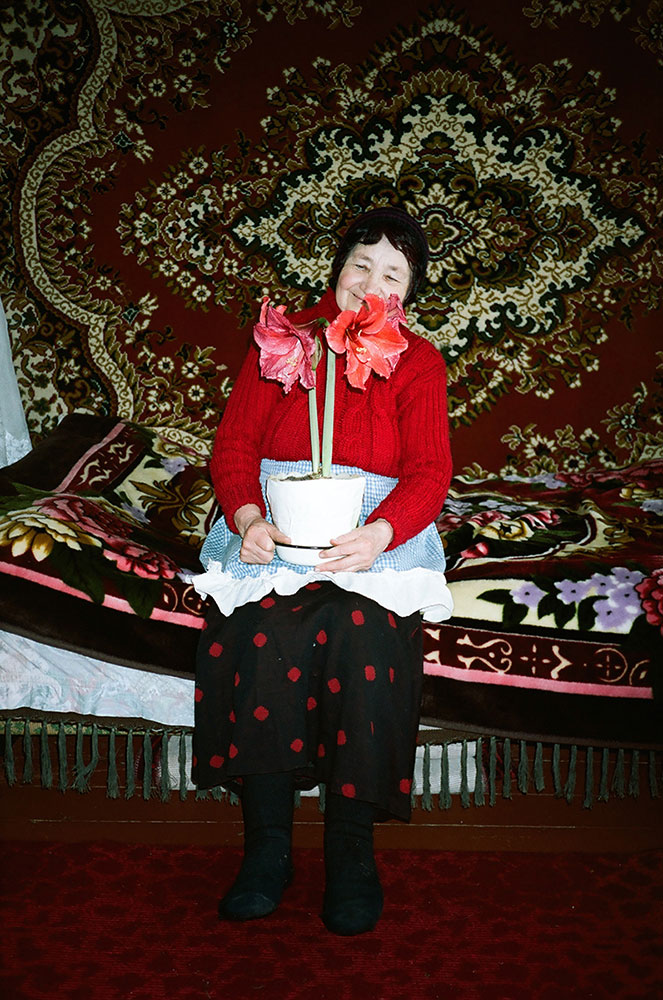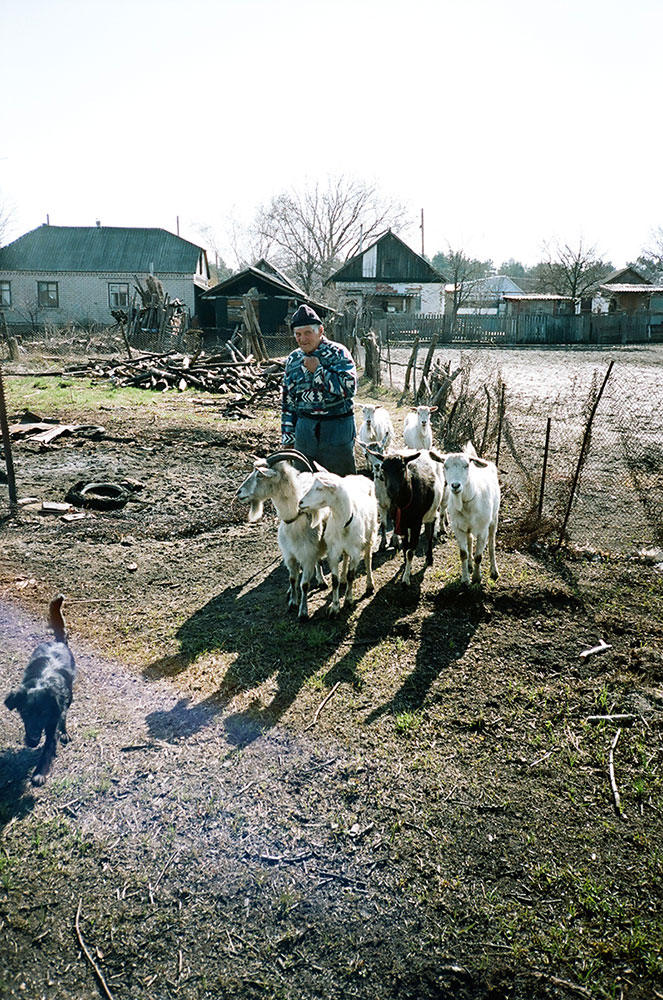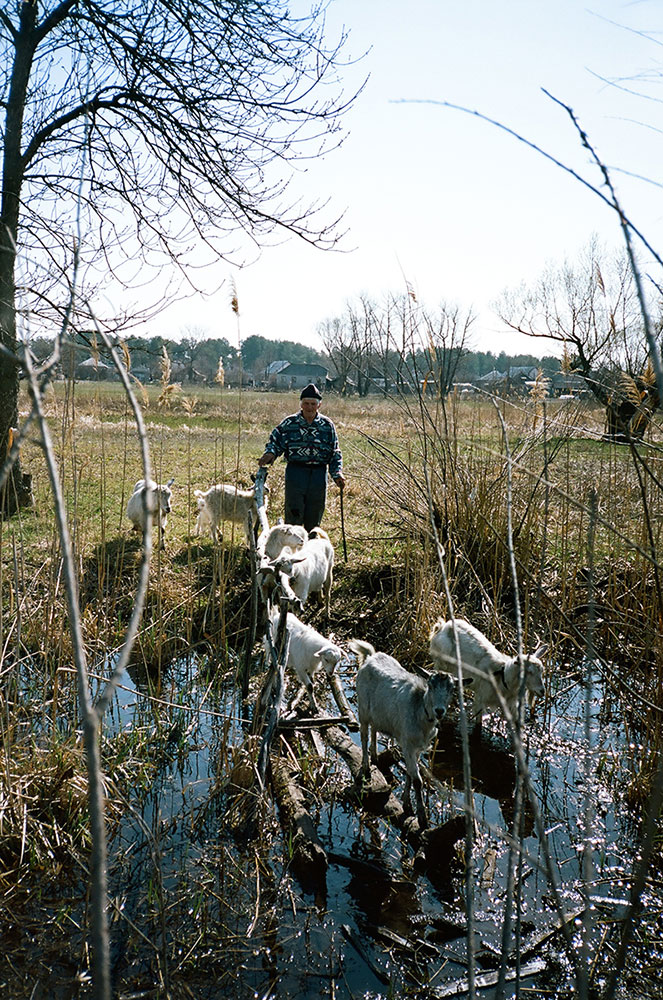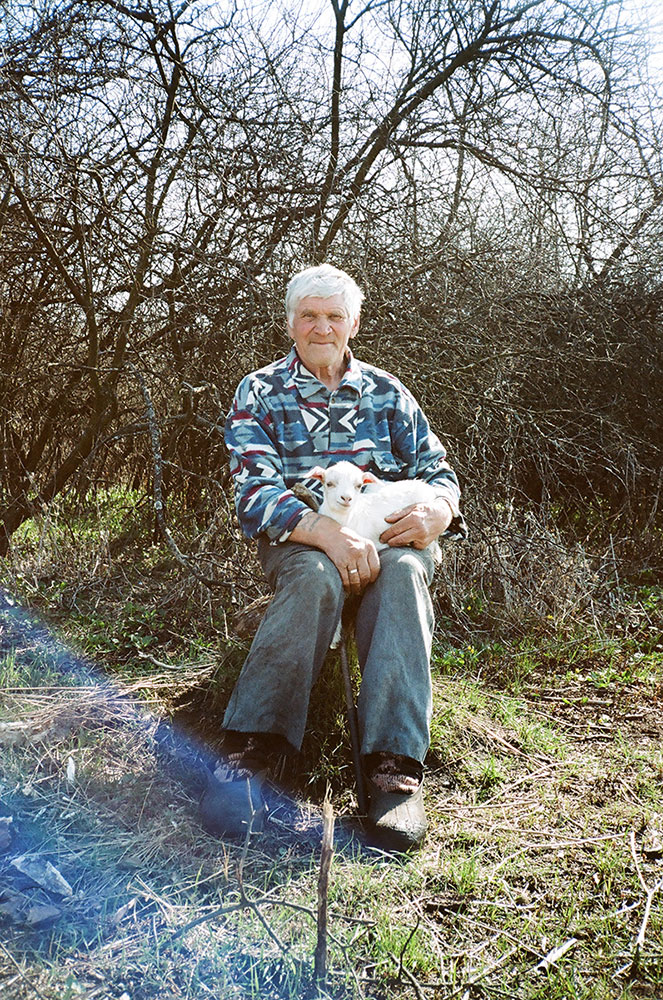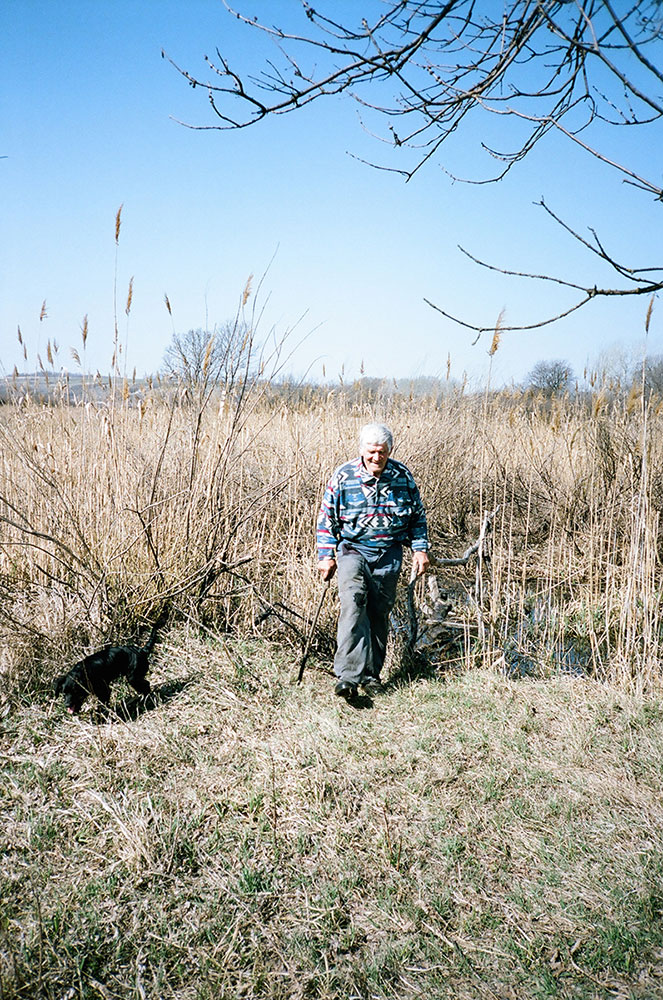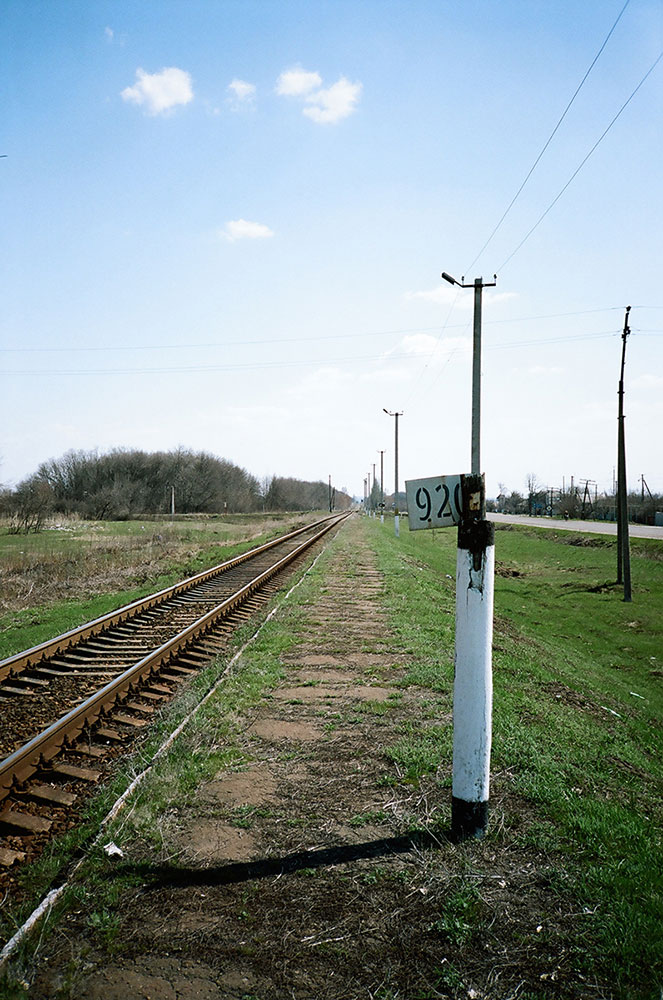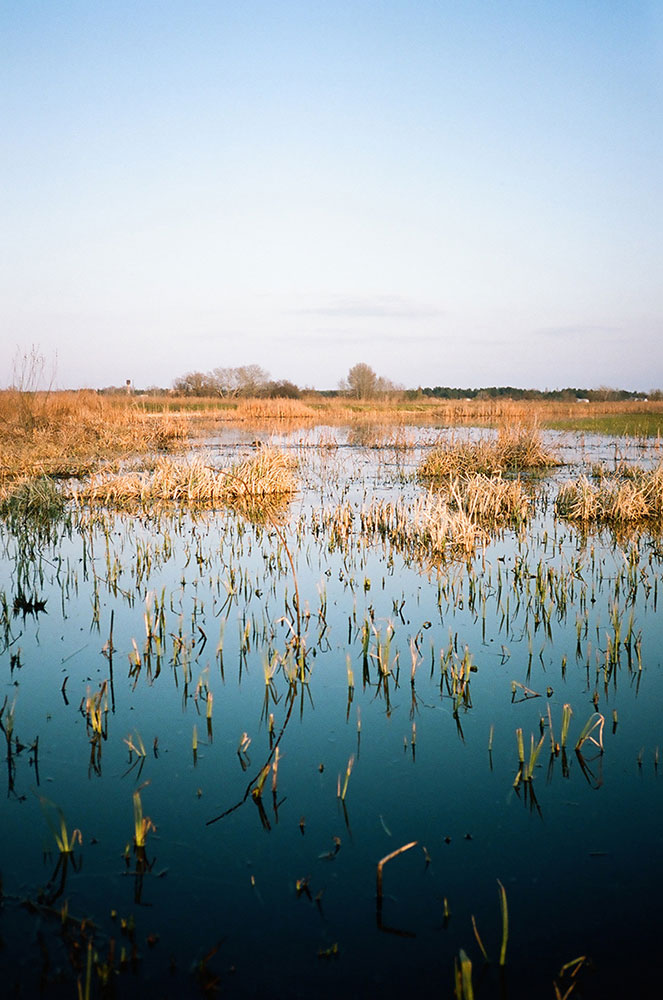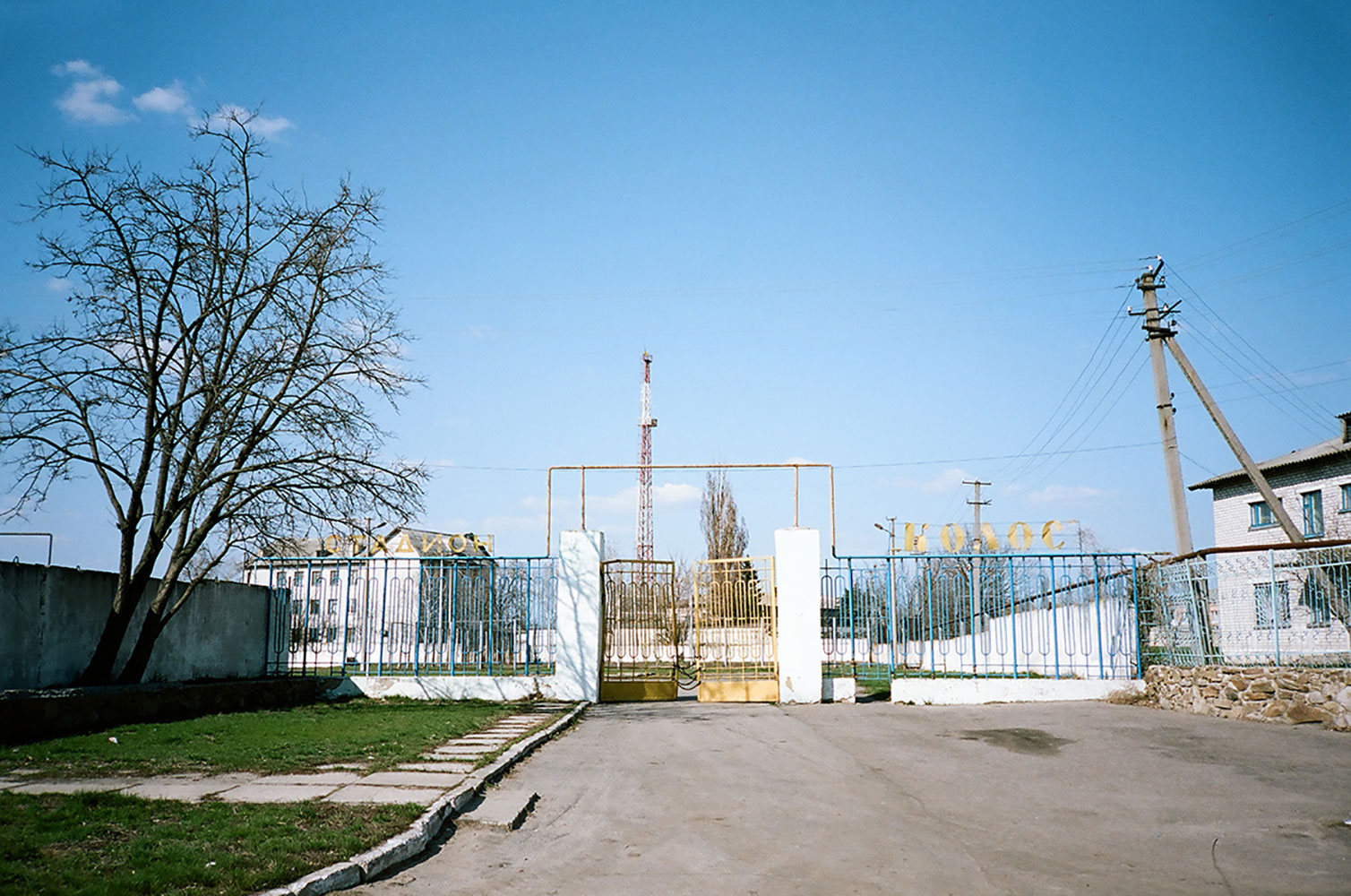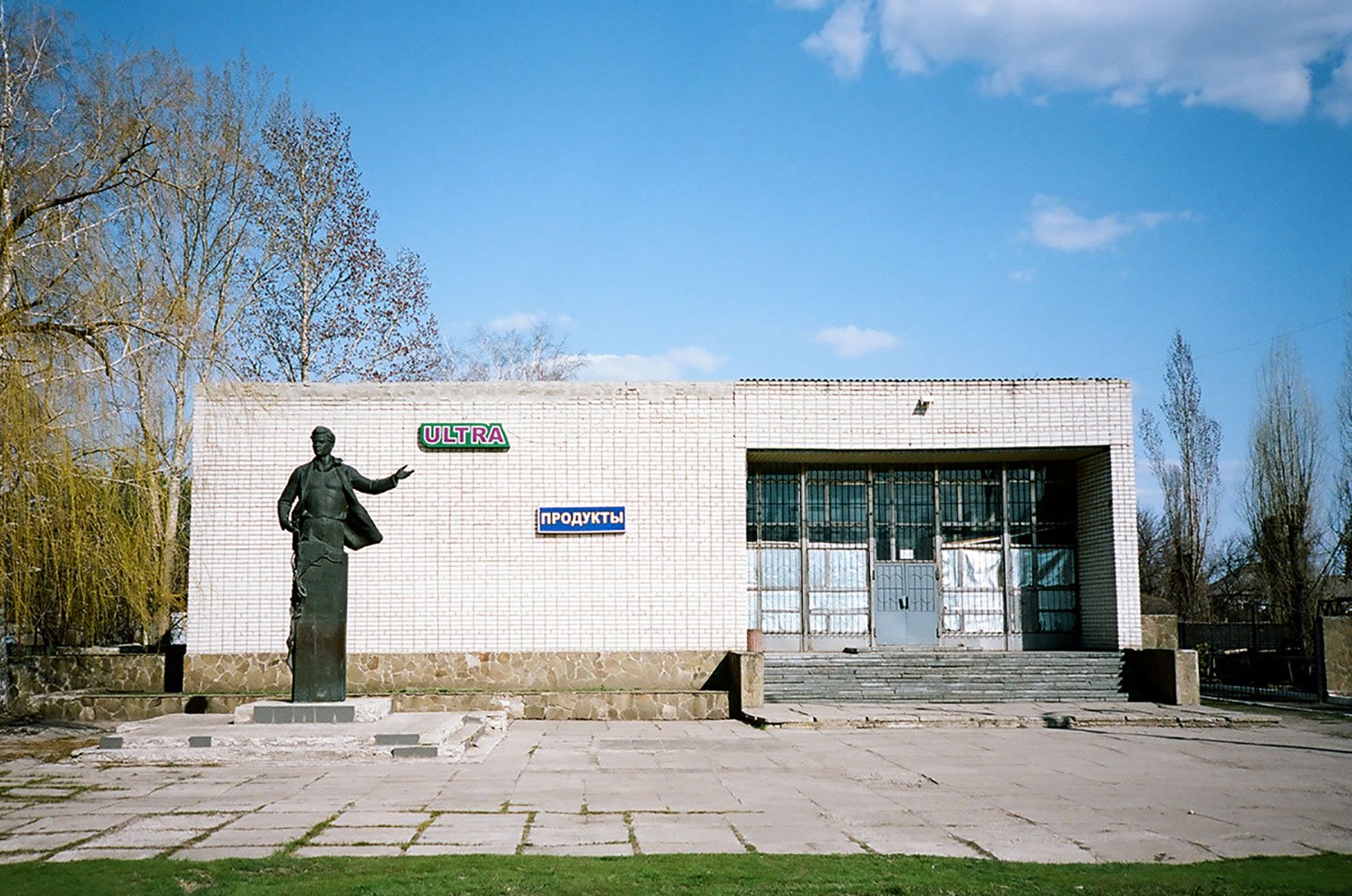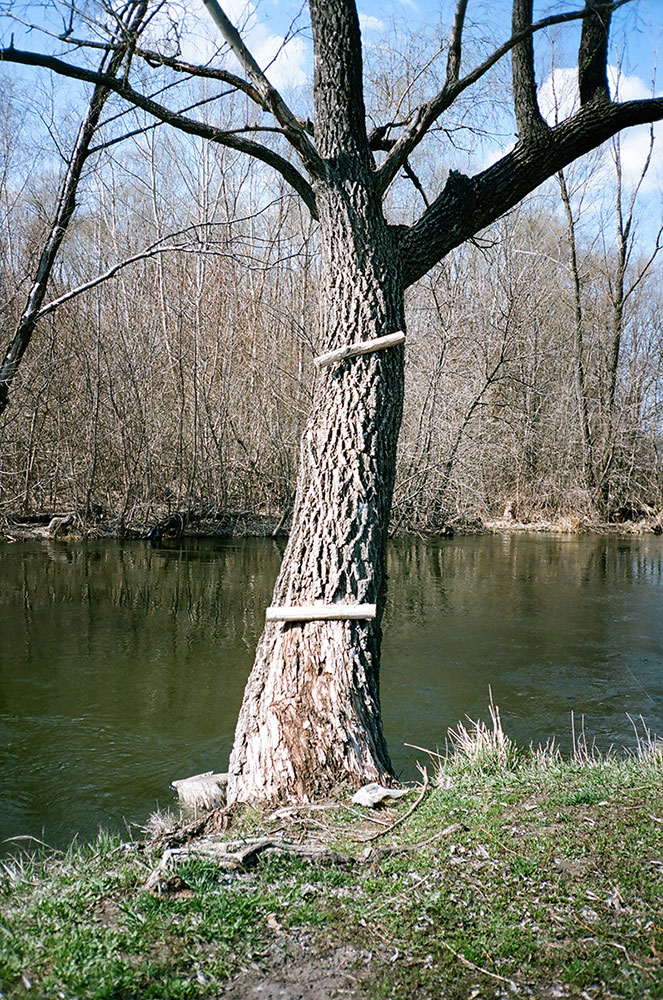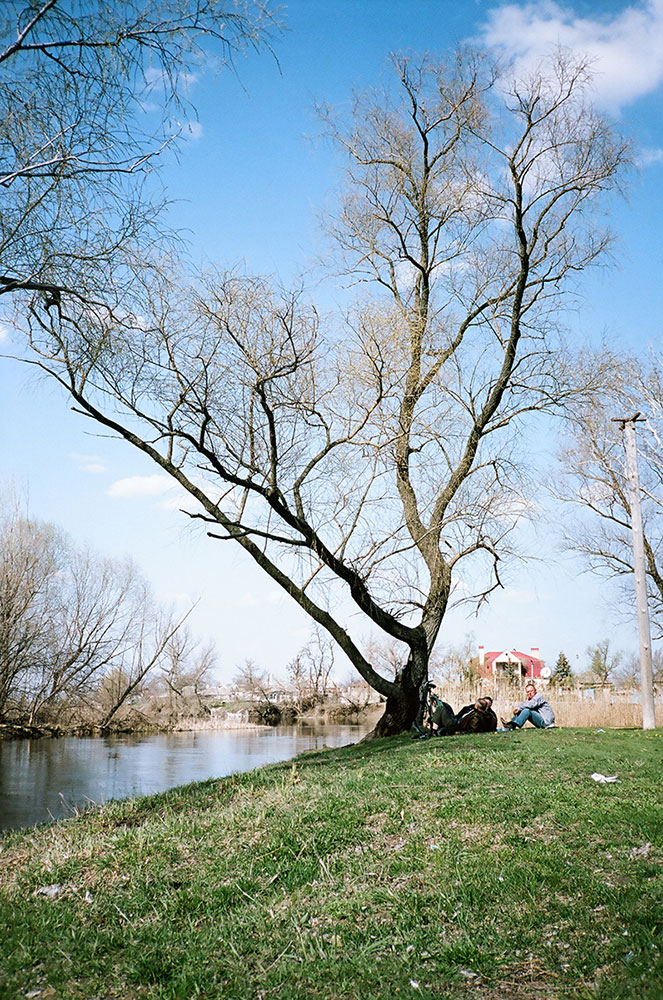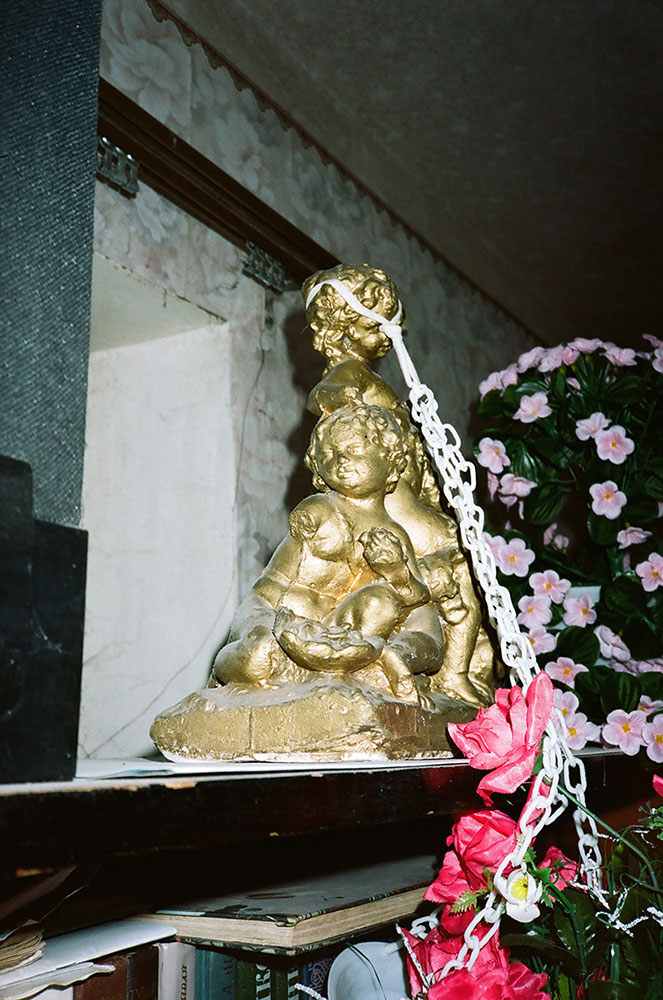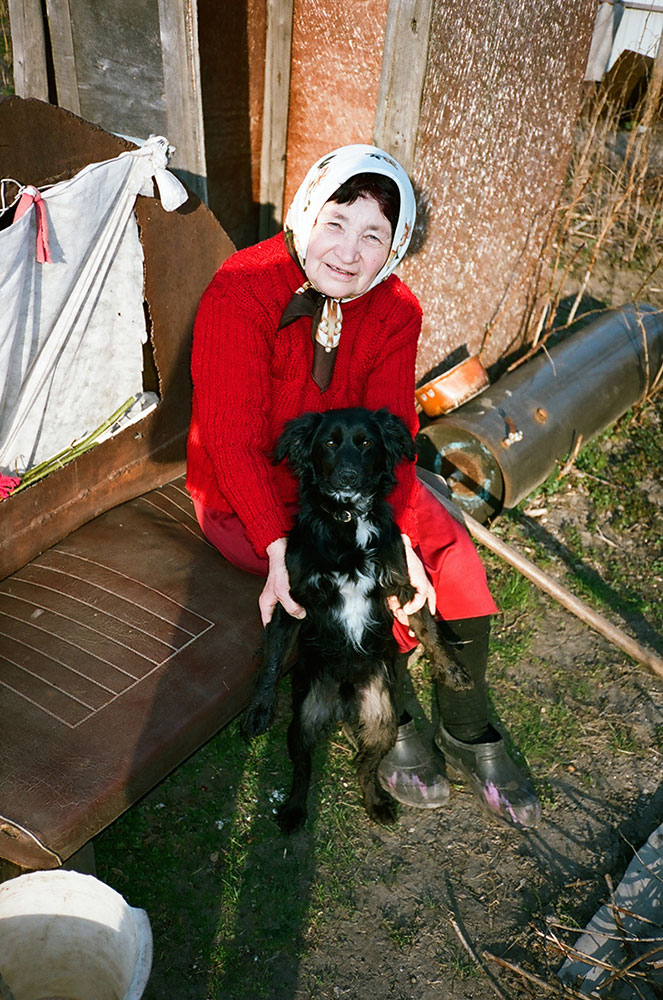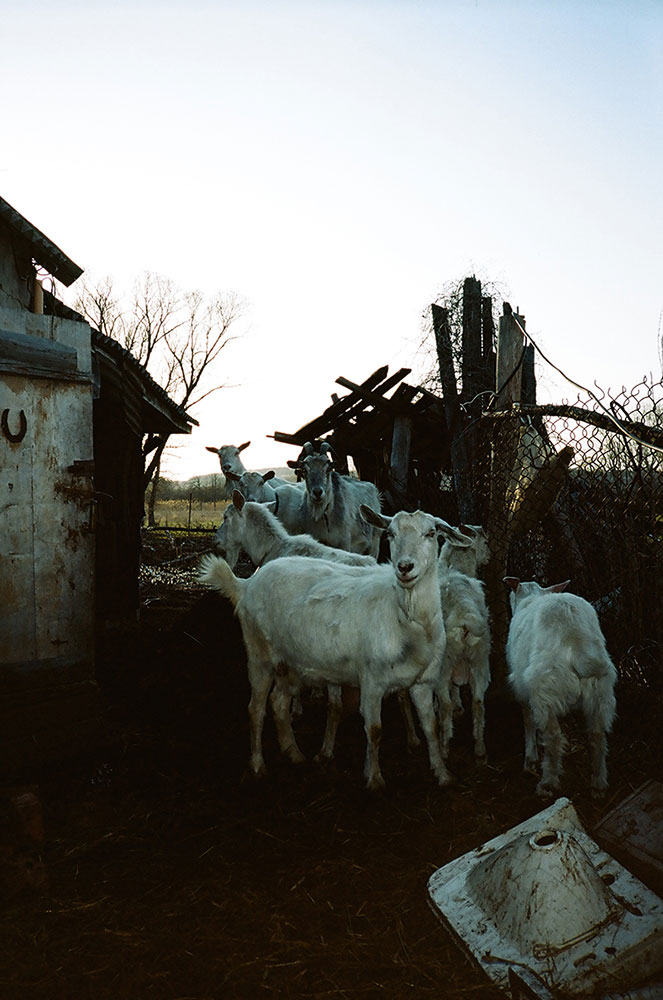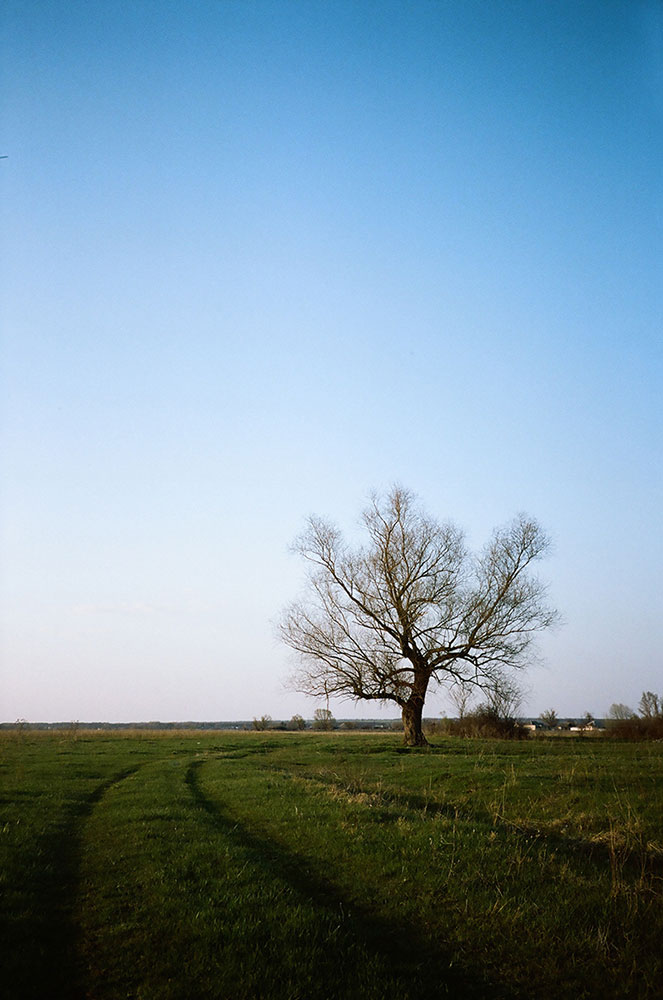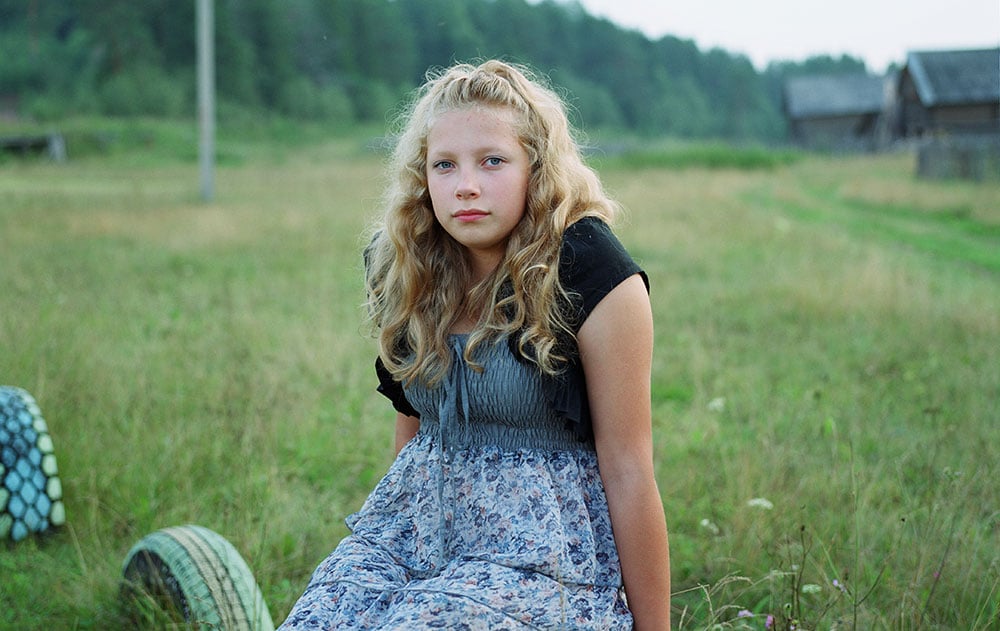Based in Kiev, photographer Lesha Berezovskiy has been prolific in documenting the city’s bourgeoning rave scene, his cycling journeys around Ukraine and trips abroad. However, at some point he realised that he had never captured his family. This realisation set him on the road to Novoaidar village in the war-torn Donetsk area. “I was born in a village in eastern Ukraine and after moving a few times with my mother we settled in Yenakiieve town in the Donetsk region. I spent all the school holidays at my grandparents’ house: all summer, a month in winter, and a couple weeks in spring and autumn. I’ve got millions of memories of this place, and it played a crucial role in my coming of age,” Berezovskiy remembers.
“Most of my peers who spent school holidays in the city got into smoking, drinking or playing computer games out of boredom. Whereas I used to run around forests and fields, climbing trees, swimming in the river, firing arrows from a handmade bow, drinking fresh goat’s milk. Behind my grandparents’ allotment there was a meadow, then a swamp you could cross using a bridge built by my grandfather, then forests and river. I spent most of the time there. And I didn’t own a computer until my third year of university.”
The small town is named after the River Aidar that it stands upon, surrounded by forests and fields. There are no factories or mines nearby so the natural surroundings remain relatively untouched and the air clean. “Novoaidar is the local centre,” says Berezovskiy. “There is a small-scale infrastructure: a school, college, local authorities, a house of culture, a small market, a hospital, a shop…There is also a small dairy factory where locals bring their milk as almost everyone has cows or goats. There used to be about 8-9,000 people, now much less, probably half of that.”
In Berezovskiy’s pictures Novoaidar appears peaceful and drenched in summer sunlight, with no trace of the fighting happening in the area. The situation however is no longer as peaceful. “The border with the Luhansk People’s republic is only 20-30 km away and from time to time there are armed conflicts happening there,” Berezovskiy says. “In the village itself there are a couple of Ukraininan military bases, in a former zoo and boarding school. A lot of people have left, almost all the young people and families in which men could be drafted.”
“When I arrived I spent a few days walking the same paths as I did as a boy, a lot of memories came back. It was like a journey to childhood,” Berezovskiy says. His series provides a unique perspective on eastern Ukraine as seen through the prism of personal memories. It is not as much about the town’s life today as it is about a return to the memories, and it makes the fragility of the ephemeral space where these shots were taken suddenly even more apparent.
Text: Anastasiia Fedorova
Image: Lesha Berezovskiy
